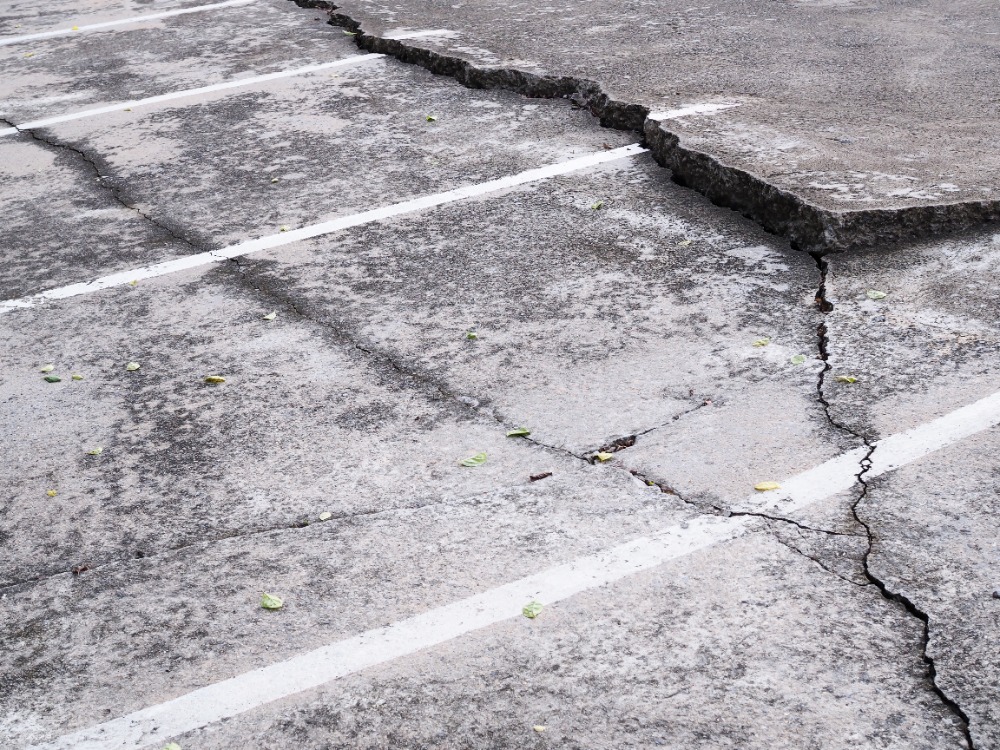A well-maintained parking lot not only enhances curb appeal, but it also ensures the safety of drivers and pedestrians. That is why, say the experts at Parking Lot Pros, taking care of asphalt parking lot repairs is so important.
Common Types of Asphalt Parking Lot Damage
Potholes are the most visible form of damage, and they can be hazardous to both vehicles and pedestrians. They form when water seeps into the pavement and expands during freezing temperatures, causing the asphalt to break apart.
Cracks are another problem in asphalt. There are three main types of cracks in parking lots:
- Alligator cracking: This type of cracking resembles the skin of an alligator, indicating that the subgrade beneath the asphalt is failing.
- Block cracking: Large rectangular cracks form when the asphalt binder shrinks due to temperature fluctuations.
- Edge cracking: These cracks typically occur along the edges of the parking lot, often due to insufficient edge support or drainage.
Raveling occurs when the asphalt’s surface deteriorates, and aggregate becomes loose. Weathering can cause the surface to appear gray and rough, indicating that the asphalt is losing its oils and becoming brittle.
Rutting happens when the pavement surface deforms due to heavy vehicle traffic, while depressions are low spots that collect water and contribute to further damage.Poor drainage can exacerbate asphalt damage, leading to the deterioration of the pavement and the subgrade beneath it.
Causes of Parking Lot Damage
Temperature fluctuations and moisture are major factors in parking lot damage. Freezing and thawing cycles can cause the pavement to expand and contract, leading to cracks and potholes.
Frequent use by heavy vehicles can stress the pavement, causing ruts, depressions, and other types of damage. Moreover, inadequate construction techniques and low-quality materials can result in premature parking lot damage.
Poorly designed or maintained drainage systems can cause water to accumulate on the surface or infiltrate the pavement, weakening the structure. Tree roots can also grow beneath the pavement, causing cracks and upheaval, while soil erosion and other natural factors can undermine the parking lot’s foundation.
Repair Techniques for Various Types of Damage
Pothole Repair
- Cold patching: This is a temporary repair method that involves filling the pothole with a cold mix asphalt.
- Hot mix asphalt patching: A more durable solution, this method involves removing the damaged area and replacing it with hot mix asphalt.
Crack Repair
- Crack sealing: This technique involves cleaning the crack and applying a flexible sealantto prevent water and debris from entering.
- Crack filling: Similar to crack sealing, this method involves filling the crack with a more rigid material to prevent further damage.
Raveling and Weathering Repair
- Slurry seal: A mixture of asphalt emulsion, fine aggregate, and water is applied to the surface, providing a new protective layer.
- Microsurfacing: Like a slurry seal, microsurfacing involves applying a more durable mixture that can handle higher traffic volumes and correct minor surface irregularities.
Rutting and Depressions Repair
- Infrared asphalt repair: This technique uses infrared heaters to heat the affected area, allowing for seamless blending of new and existing asphalt.
- Full-depth patching: Damaged asphalt and underlying material are removed and replaced with new materials to address structural issues.
Drainage Improvement
- Installing French drains: These subsurface drains help collect and redirect water away from the parking lot.
- Adjusting catch basins: Ensuring catch basins are at the appropriate height and properly functioning can prevent water from pooling on the surface.
Conclusion
Addressing asphalt parking lot damage is essential to maintaining the safety and appearance of your property. By understanding the common types of damage, their causes, and how to tackle them, you can ensure the longevity and overall wellbeing of your lot.

